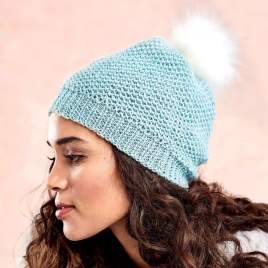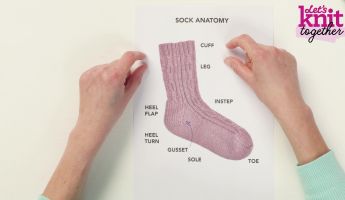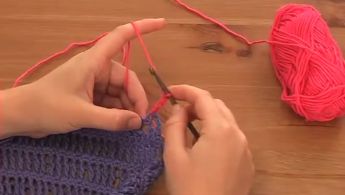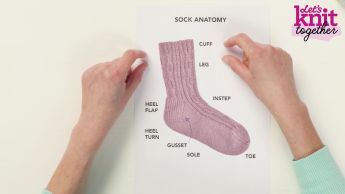How To Work Two-colour Brioche Stitch
video by
Neti Love & Julie Peasgood
- Overview
- Practical Guides
If you love the idea of a deep reversible rib pattern, but in two colours at the same time, you’ll love this stitch. Using just one colour on each row, one dominates as the uppermost stitch, while the other sits in the background, and the effect is reversed on the other side.
Depending on what colours you have, you could have something quite subtle and muted, for example, two shades of the same colour, or two very contrasting colours for a striking design. It needs a set up row, followed by a four-row pattern, so it is worth practising on a swatch to get a handle on it.
Two-colour brioche can also be worked in the round or with crossed stitches for a travelling cable effect, so there are lots of exciting possibilities and variations. Here is a simple version, with some easy-to-remember rules, to get you started.
TIP: to work brioche stitch in a single colour, see our video on single-colour brioche, which is a simpler one-row repeat.
You’ll need double-pointed needles (DPNs) or a circular needle to work this stitch in two colours, as rows alternate between being turned (as in normal flat knitting), or slid along the needle ready to work the next colour. Colours are also alternated, so while it is a four-row pattern, it is easier to think of it as working the purl row twice (once in each colour), then the knit row twice (again, once in each colour).
A stretchy cast on with an even number of stitches is needed for this deep stitch, and this version worked in rows begins and finishes each time with a knit stitch, which produces a neat selvedge. After the cast on, a set up row is worked that when you look at the stitches on your needle, you’ll see single stitches alternated with a pair of stitches that look crossed, and these will be knitted or purled together, depending on the pattern row.
To cast on
Using your main colour, make a slip knot leaving a 30cm tail and place this on a project needle in your right hand. Hold the working yarn (attached to the ball) out of the way in your right hand. Hold the long tail in the fingers of your left hand, and take the thumb behind the strand and tension it. Insert the tip of the needle insert under the strand to put a loop on the needle. Next, wrap the working yarn from back to front over the needle and use your left thumb to slip the tail loop over and off the needle. Pull the tail end to tighten the stitch on the needle, then reposition the tail over your thumb to cast on the next stitch. Repeat to cast on the number of stitches according to your pattern, counting the slip knot counts as one stitch. In this version, we start and finish each row with a knit st a selvedge stitch, so not part of the pattern repeat.
Below is the sample pattern worked on ten cast-on stitches as in the video, followed by some handy tips to keep things simple.
Sample pattern
Using your main yarn and long tail thumb cast-on method, cast on ten stitches
Set-up row: k2, *yfwd, sl 1 pwise, k1, rep from * to end
Slide sts to opposite end of needle
Join in contrast colour
Purl Row 1: k1, yfwd, * sl 1 pwise, yrn, p2tog, rep from * to last st, ytb, k1
Turn and change to main colour, twisting yarns together to carry yarn not in use up side
Purl Row 2: as Purl Row 1
Slide stitches to opposite end of needle
Change to contrast colour
Knit Row 1: k1, *k2tog, yfwd, sl 1 pwise, rep from *to last two sts, yfwd, sl 1 pwise, wyif k1
Turn
Change to main colour
Knit Row 1: k1, *k2tog, yfwd, sl 1 pwise, rep from *to last two sts, yfwd, sl 1 pwise, wyif k1
Slide sts to opposite end of needle
Change to contrast colour
Last four rows set pattern
Continue in pattern for as many rows as needed
Cast off in pattern (p2tog or k2tog prior to casting off st)
Guidelines
- It can be easy to get lost in a four-row pattern such as this, so use these tips to keep track.
- Slide stitches at the end of a row if the yarn strands are at opposite ends
- Turn the needle at the end of a row if the yarn strands are at the same end
- The last colour used is the first and last stitches on the needle, so use the other colour next
- When there are two single stitches preceding crossed stitches on the needle at the start of the row, work a purl row
- When there is one single stitch preceding crossed stitches on the needle at the start of the row, work a knit row










































